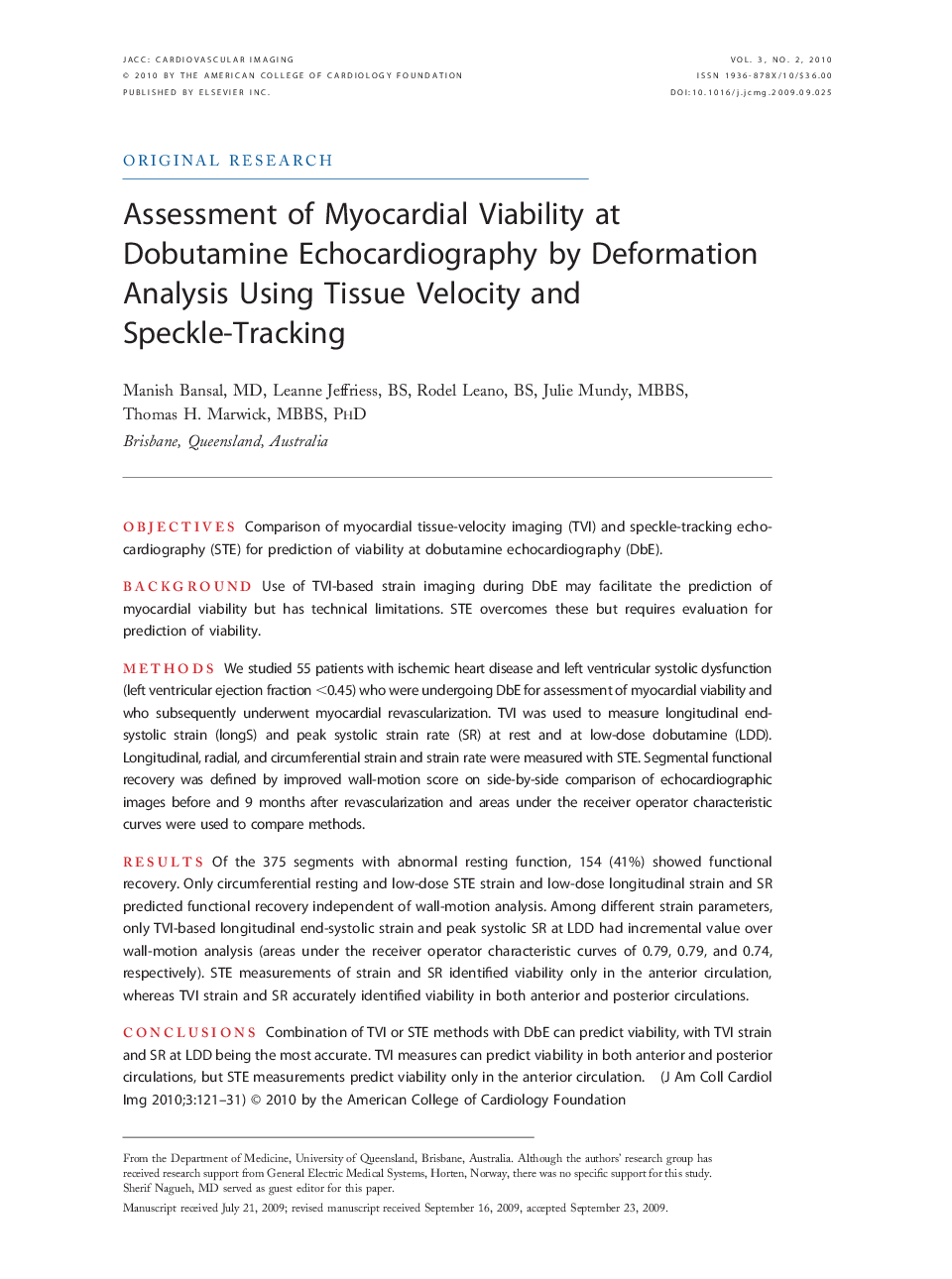| Article ID | Journal | Published Year | Pages | File Type |
|---|---|---|---|---|
| 2938995 | JACC: Cardiovascular Imaging | 2010 | 11 Pages |
ObjectivesComparison of myocardial tissue-velocity imaging (TVI) and speckle-tracking echocardiography (STE) for prediction of viability at dobutamine echocardiography (DbE).BackgroundUse of TVI-based strain imaging during DbE may facilitate the prediction of myocardial viability but has technical limitations. STE overcomes these but requires evaluation for prediction of viability.MethodsWe studied 55 patients with ischemic heart disease and left ventricular systolic dysfunction (left ventricular ejection fraction <0.45) who were undergoing DbE for assessment of myocardial viability and who subsequently underwent myocardial revascularization. TVI was used to measure longitudinal end-systolic strain (longS) and peak systolic strain rate (SR) at rest and at low-dose dobutamine (LDD). Longitudinal, radial, and circumferential strain and strain rate were measured with STE. Segmental functional recovery was defined by improved wall-motion score on side-by-side comparison of echocardiographic images before and 9 months after revascularization and areas under the receiver operator characteristic curves were used to compare methods.ResultsOf the 375 segments with abnormal resting function, 154 (41%) showed functional recovery. Only circumferential resting and low-dose STE strain and low-dose longitudinal strain and SR predicted functional recovery independent of wall-motion analysis. Among different strain parameters, only TVI-based longitudinal end-systolic strain and peak systolic SR at LDD had incremental value over wall-motion analysis (areas under the receiver operator characteristic curves of 0.79, 0.79, and 0.74, respectively). STE measurements of strain and SR identified viability only in the anterior circulation, whereas TVI strain and SR accurately identified viability in both anterior and posterior circulations.ConclusionsCombination of TVI or STE methods with DbE can predict viability, with TVI strain and SR at LDD being the most accurate. TVI measures can predict viability in both anterior and posterior circulations, but STE measurements predict viability only in the anterior circulation.
